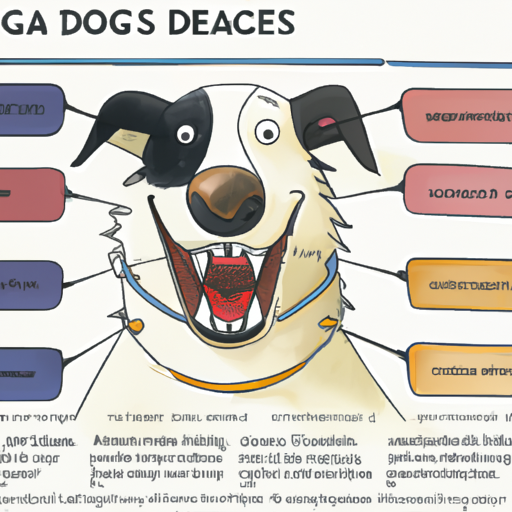As a dog parent, you’re probably well aware of your furry friend’s dental habits, from the joy they experience when chewing on a bone to the less-than-pleasant experience of puppy teething. But have you ever paused to wonder, “how many teeth do dogs have“? In this article, we’ll delve into the fascinating world of canine dentistry, discussing everything from the number of teeth in puppies and adult dogs to the importance of dental health for our four-legged companions.
Table of Contents
- Puppy Teeth: The Basics
- Adult Dog Teeth: A Full Set
- Tooth Types: Understanding The Different Teeth in a Dog’s Mouth
- The Importance of Dental Health in Dogs
- Frequently Asked Questions
Key Takeaways
- Puppies have 28 deciduous teeth while adult dogs have 42 permanent teeth
- Dental health is crucial for a dog’s overall well-being
- Regular dental check-ups and at-home care can prevent many dental diseases
Puppy Teeth: The Basics
Just like human babies, puppies are not born with teeth. Their first set, known as deciduous or baby teeth, start to emerge when they are about 2 to 4 weeks old. A typical puppy will have 28 of these tiny, sharp teeth, which serve as a precursor to their adult dentition.
However, these baby teeth don’t stick around for long. By the time your pup reaches 3 to 6 months of age, their deciduous teeth will begin to fall out, making way for the permanent set. You might find these teeth around your home, but it’s more common for puppies to swallow them while eating, which is nothing to worry about.
Adult Dog Teeth: A Full Set
By the time your dog reaches 7 months of age, they should have a complete set of adult teeth. An adult dog typically has 42 teeth: 20 on the top jaw and 22 on the bottom. This is significantly more than the 32 teeth we humans have.
This full set of teeth includes incisors, canines, premolars, and molars, each of which serves a specific function, whether it’s biting, tearing, or grinding food. You can learn more about the specifics of dog teeth and their functions here.
Tooth Types: Understanding The Different Teeth in a Dog’s Mouth
Just like us, dogs have several types of teeth in their mouths, each designed for a specific purpose:
- Incisors: These are the small teeth at the front of the mouth, used for nibbling and grooming.
- Canines: These long, pointed teeth are used for tearing and grasping.
- Premolars: Located behind the canines, these teeth are used for shearing and cutting food.
- Molars: These are the large teeth at the back of the mouth, used for grinding and chewing food.
The Importance of Dental Health in Dogs
Dental health is a crucial aspect of a dog’s overall well-being. Poor dental hygiene can lead to a variety of health problems, from bad breath and tooth loss to more serious conditions such as heart, liver, and kidney disease. Regular dental check-ups with your vet are essential to keeping your dog’s mouth healthy.
At-home dental care is also important. This includes regular tooth brushing, providing dental treats, and using dental health-specific dog food. These at-home care tips can help maintain your dog’s dental health.
You can find more information about dog dental health at One Top Dog, a comprehensive resource for all your dog care needs.
Frequently Asked Questions
Q: How often should I brush my dog’s teeth?
A: Ideally, you should brush your dog’s teeth daily. However, if this isn’t possible, aim for at least three times a week.
Q: What should I do if my dog has bad breath?
A: Bad breath can be a sign of dental disease. If your dog’s breath is consistently foul, it’s time to visit a vet.
Q: How often should I take my dog to the vet for a dental check-up?
A: Most vets recommend a dental check-up at least once a year for adult dogs. Puppies may require more frequent visits to ensure their teeth are developing properly.
Remember, understanding your dog’s dental health is a crucial part of being a responsible pet owner. The more you know, the better you can care for your furry friend. Happy brushing!



